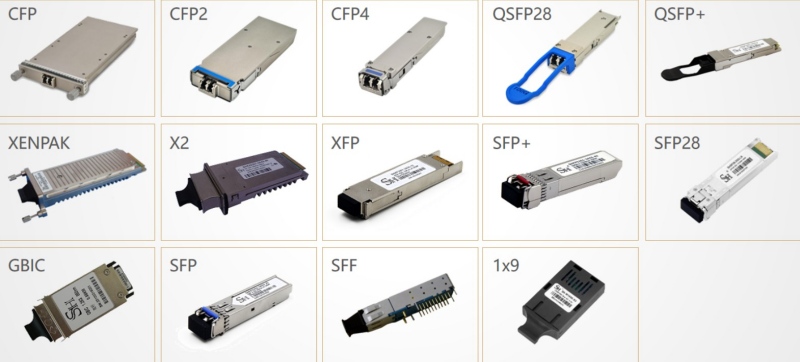How to Choose SFP Module:Singlemode SFP vs Multimode SFP
Do you know what single mode and multimode in SFP Optical Module Stand for respectively? What are the differences between sm and mm optical modules?
This article will walk you through the differences and how to choose between the two.
1. What is Singlemode and Multimode SFP

Single-mode and multi-mode fiber optic modules use with different types of fiber optic cables.
Single-mode modules use a 9/125 micrometer diameter fiber optic cable and can transmit light at wavelengths of 1310nm, 1550nm with WDM.
In contrast, multi-mode modules use a 50/125 micrometer or 62.5/125-micrometer diameter fiber optic cable and can transmit light at wavelengths of 850nm or 1310nm, with 850nm being the most commonly used wavelength.
The terms "single-mode" and "multi-mode" refer to the way light is transmitted through the fiber optic cable within the optical module. Single-mode modules use a single mode of light, which allows for less dispersion and higher bandwidth over longer distances.
In contrast, multi-mode modules use multiple modes of light, which can result in more dispersion and lower bandwidth over shorter distances.
2.Differences between SM and MM SFP Modules
The differences between single-mode and multi-mode fiber optic modules go beyond the type of fiber they are designed to work with. Other aspects such as transmission distance, applications, light source, power consumption and price also vary between the two.
Transmission distance
- Single-mode modules are typically used for long-distance transmission and can transmit up to 120km without the need for relays, depending on the wavelength of the fiber. For example, modules with a 1310nm wavelength can transmit up to 40km, while those with a 1550nm wavelength can transmit up to 120km.
- Multi-mode modules are suitable for short-distance transmission, and their transmission distance is typically within 300-500m.
Applications
- Single-mode modules are suitable for high-bandwidth and long-distance applications, such as metropolitan area networks and passive optical networks.
- Multi-mode modules are more appropriate for low-bandwidth and short-distance applications, such as data center rooms and local area networks.
Light source
- Single-mode modules use light-emitting diodes or lasers as their light source.
- Multi-mode modules use laser diodes or light-emitting diodes.
Power consumption
Single-mode modules generally consume more power than multi-mode modules, but the power consumption of both types of modules depends on various factors such as their parameters, models and brands.
Price
Single-mode modules are typically more expensive than multi-mode modules because they use more components and more expensive laser light sources.
3.How to Choose SFP Module between Singlemode and Multimode
When choosing between single-mode and multi-mode fiber optic modules, it is important to consider the specific application requirements. As mentioned in the previous text, single-mode and multi-mode modules differ in terms of transmission distance, applications, light source, power consumption and price.
For example
- For long-distance transmission in a metropolitan area network, single-mode modules are a better choice.
- For short-distance transmission in a local area network, multi-mode modules are more appropriate.
In general, multi-mode modules are suitable for networks with many nodes, connections, bends and connectors or couplers, while single-mode modules are suitable for long-haul backbone networks.

